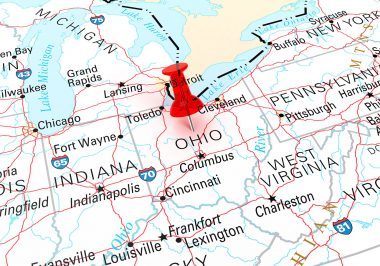Homeownership by Generation: 2025 Statistics, Trends & Challenges
Updated Tue, Nov 4, 2025 - 22 min read
Top blog articles
Homeownership remains a cornerstone of the American Dream, yet the path to owning a home looks dramatically different for each generation. From Baby Boomers who benefited from post-war prosperity to Gen Z navigating record-high housing costs, each cohort faces unique economic conditions, societal norms, and challenges that shape their homeownership journey.
In 2025, the landscape of homeownership across generations reveals stark contrasts: while 79.6% of Baby Boomers own homes, only 26.1% of Gen Z adults have achieved homeownership. These differences aren’t just about age, they reflect profound changes in housing affordability, economic stability, student debt burdens, and shifting life priorities that define each generation’s experience.
This comprehensive guide explores homeownership statistics, trends, and challenges across all generations, from the Silent Generation through Gen Z. Whether you’re a first-time buyer, real estate professional, policy maker, or simply curious about generational housing trends, understanding these patterns provides valuable insights into America’s evolving housing market and what the future holds for homeownership.
Understanding Generational Definitions
Before diving into homeownership statistics, let’s clearly define each generation and their current ages in 2025:
The Generations
Silent Generation (Born 1928-1945):
- Current Ages: 80-97 years old
- Defining Events: Great Depression, World War II, Korean War
- Population Status: Smallest adult generation due to age; many transitioning to assisted living or multi-generational homes
Baby Boomers (Born 1946-1964):
- Current Ages: 61-79 years old
- Defining Events: Post-war economic boom, Civil Rights Movement, Vietnam War, Woodstock
- Population Status: Large generation now entering or in retirement
Generation X (Born 1965-1980):
- Current Ages: 45-60 years old
- Defining Events: End of Cold War, rise of personal computers, MTV, economic recessions
- Population Status: Peak earning years, often called the “forgotten generation”
Millennials / Generation Y (Born 1981-1996):
- Current Ages: 29-44 years old
- Defining Events: 9/11, Great Recession, rise of internet and social media, smartphone revolution
- Population Status: Largest adult generation in workforce
Generation Z (Born 1997-2012):
- Current Ages: 13-28 years old
- Defining Events: Post-9/11 security environment, social media dominance, COVID-19 pandemic, climate change awareness
- Population Status: Entering workforce and early homebuying years
Generation Alpha (Born 2013-present):
- Current Ages: 12 and younger
- Status: Too young for homeownership analysis; the first generation born entirely in the 21st century
Current Homeownership Rates by Generation [2025]
The Numbers Tell the Story
Understanding homeownership rates across generations reveals not just who owns homes, but how economic conditions, life stage, and historical events shape housing access.
2024-2025 Homeownership Rates:
- Baby Boomers: 79.6%
- Generation X: 72.9%
- Millennials: 54.9%
- Generation Z: 26.1%
- Silent Generation: ~70% (declining as members move to assisted living)
These statistics from recent U.S. Census Bureau data and real estate industry reports reveal significant disparities between generations. The nearly 54-percentage-point gap between Baby Boomers and Gen Z reflects not just age differences but fundamental shifts in housing affordability and accessibility.
Age-Adjusted Comparisons
Looking at homeownership rates by generation at similar ages provides more insightful comparisons than overall rates, which conflate age effects with generational differences.
Homeownership at Age 27:
- Baby Boomers (when they were 27): 40.5%
- Gen X (when they were 27): 38.4%
- Millennials (when they were 27): 35-38%
- Gen Z (currently 27 in 2025): 32.6%
Homeownership at Age 35:
- Baby Boomers (when they were 35): 61.5%
- Gen X (when they were 35): 59.4%
- Millennials (currently 35 in 2025): 56%
These age-adjusted figures reveal a troubling trend: each successive generation achieves lower homeownership rates at comparable ages than the generation before them. This pattern began not with Millennials—as commonly believed—but with Generation X, and has accelerated with younger cohorts.
The Homeownership Gap: Then vs. Now
The gap between generations becomes even more striking when examining peak homebuying ages. According to the National Association of Realtors, the median age of first-time homebuyers reached 36 years in 2023—the oldest since NAR began tracking this data in 1981. Traditionally, first-time buyers were between 28 and 33 years old.
This delay reflects multiple factors:
- Dramatically increased housing costs relative to income
- Student loan debt burdens
- Delayed marriage and family formation
- Job market instability
- Rising rental costs consuming savings
- Tighter mortgage lending standards post-2008
Baby Boomers: Leading in Homeownership
Profile and Statistics
Baby Boomers, born during the post-World War II economic boom from 1946 to 1964, currently lead all generations in homeownership with 79.6% owning homes. This generation of approximately 73 million Americans built their wealth during decades of relative economic prosperity, stable labor markets, and favorable housing conditions.
Key Statistics:
- Homeownership rate: 79.6% (2024)
- Average home equity: Highest of any generation, often exceeding $250,000
- Mortgage status: Many own homes outright or have minimal remaining balances
- Real estate holdings: Significant portion own investment properties, vacation homes, or rental properties
Path to Homeownership
Baby Boomers’ journey to homeownership benefited from several favorable economic conditions:
Affordable Housing Relative to Income: During Boomers’ peak homebuying years (1970s-1990s), median home prices remained 2-3 times median household income. Today, that ratio has ballooned to 5-7 times in many markets, fundamentally altering housing accessibility.
Stable Job Market: Boomers entered workforces with stronger employer loyalty, pension plans, and clearer career progression. Many held jobs for decades at a single employer, providing income stability that facilitated homeownership planning.
Favorable Mortgage Access: Despite experiencing high mortgage rates during the 1980s (peaking above 18% in 1981), Boomers bought homes when prices were lower, so monthly payments remained manageable. As rates dropped in subsequent decades, many refinanced to advantageous terms.
Pension Benefits: Unlike younger generations relying primarily on 401(k) plans, many Boomers enjoyed defined-benefit pension plans providing guaranteed retirement income, making homeownership more financially secure.
Dual-Income Opportunity: As women increasingly entered the workforce during Boomers’ prime earning years, many households benefited from dual incomes without the elevated housing costs that later absorbed this advantage.
Current Status and Trends
Aging in Place: Many Baby Boomers are choosing to age in place rather than downsizing, contributing to tight housing inventory that constrains younger buyers. According to housing market analysis, Boomers staying in their homes reduces available inventory by an estimated 1.6 million units that might otherwise be on the market.
Second Homes and Investment Properties: Boomers represent the largest segment of second-home and investment property owners. With substantial home equity and retirement savings, many maintain vacation homes or rental properties, further tightening housing supply for first-time buyers.
Downsizing Considerations: As Boomers enter their late 70s, some are beginning to downsize, though this trend has been slower than anticipated. High moving costs, emotional attachments, and favorable property tax treatments for long-term homeowners discourage moves.
Financial Security Through Homeownership: Homeownership has generated substantial wealth for Boomers. The average Boomer homeowner has seen their property appreciate 3-5% annually over decades, creating significant equity that younger generations struggle to replicate given today’s affordability challenges.
Challenges Despite High Ownership
While Baby Boomers lead in homeownership, they face their own challenges:
- Rising property taxes straining fixed retirement incomes
- Aging homes requiring costly maintenance and updates
- Concerns about estate planning and passing wealth to heirs
- Healthcare costs potentially requiring home equity liquidation
- Property management challenges for those owning multiple properties
Generation X: The Middle Ground
Profile and Statistics
Generation X, born between 1965 and 1980, represents approximately 65 million Americans now in their peak earning years. Often called the “forgotten generation” sandwiched between larger cohorts, Gen X maintains solid but declining homeownership rates compared to their predecessors.
Key Statistics:
- Homeownership rate: 72.9% (2024), up slightly from 72% in 2023
- Age-adjusted comparison: At age 40, 64% of Gen X owned homes vs. 69% of Boomers at 40
- Market presence: Active buyers upgrading to larger homes as families grow
- Investment activity: Many diversifying portfolios with real estate investments
Economic Conditions Shaping Gen X Homeownership
Dot-Com Bubble (2000-2002): Many Gen Xers entered peak earning years during the dot-com crash, experiencing early career instability that delayed homebuying timelines and reduced savings.
Housing Boom and Bust: Gen X members in their 30s and 40s during the 2000s housing bubble often bought at inflated prices. Many experienced foreclosure or underwater mortgages during the Great Recession (2007-2009), substantially impacting their wealth accumulation and homeownership trajectories.
Recovery Period: Post-recession recovery during the 2010s allowed many Gen Xers to eventually achieve homeownership, though often later than anticipated and with setbacks from the housing crisis.
Current Market Advantages: Now in prime earning years (45-60), many Gen X members have higher incomes, established credit, and accumulated savings enabling homeownership despite challenges faced earlier.
Homeownership Characteristics
Financial Pragmatism: Gen X is known for financial conservatism shaped by economic instability they witnessed. This generation typically:
- Makes larger down payments when possible (often 15-20%)
- Focuses on building equity quickly through extra principal payments
- Invests in home improvements to increase property value
- Carefully evaluates housing costs relative to income
Bridge Generation: Gen X bridges traditional homeownership expectations of Boomers with the flexibility-focused approach of younger generations. They value homeownership for both financial security and lifestyle quality.
Dual-Income Households: Gen X pioneered widespread dual-income household norms, with both partners typically working full-time. This income necessity reflects increased housing costs but also provides greater purchasing power.
Technology Adoption: While not digital natives, Gen X adapted to technology in homebuying, using online listings, virtual tours, and digital mortgage applications—innovations they helped normalize for younger generations.
Current Market Behavior
Trading Up: Many Gen X homeowners are upgrading to larger homes as they reach peak earnings, often moving to properties with home offices, better school districts, or more space for multi-generational living.
Investment Properties: With more established finances, Gen X increasingly invests in rental properties, second homes, or real estate investment trusts (REITs), building wealth beyond primary residences.
Refinancing Activity: Gen X homeowners actively refinanced during recent low-rate periods, reducing monthly payments and building equity faster, advantages less available to newer buyers facing higher rates.
Millennials: Redefining Homeownership
Profile and Statistics
Millennials (Generation Y), born between 1981 and 1996, represent America’s largest adult generation at approximately 72 million people. Now aged 29-44, Millennials have fundamentally different homeownership experiences than previous generations, shaped by economic upheaval, technological transformation, and shifting life priorities.
Key Statistics:
- Homeownership rate: 54.9% (2024), essentially flat from 54.8% in 2023
- Age-adjusted comparison: At age 30, only 43% of Millennials owned homes vs. 52% of Boomers and 49% of Gen X at 30
- First-time buyer dominance: Millennials comprise the largest share of first-time homebuyers
- Market share: Millennials aged 25-44 have purchased approximately 60% of homes sold in recent years
The Millennial Housing Challenge
Great Recession Impact: Millennials came of age during the 2008 financial crisis, with many graduating into the worst job market since the Great Depression. This timing profoundly shaped their financial trajectories:
- Entry-level wages stagnated or fell
- Career advancement delays affected earnings potential
- Witnessing foreclosures created housing market skepticism
- Credit standards tightened, making mortgages harder to obtain
- Savings depleted or never accumulated during early career struggles
Student Loan Debt Crisis: Millennials carry unprecedented student loan debt averaging $30,000-$40,000 per borrower, with many owing significantly more. This debt burden:
- Delays homebuying by an average of 7 years according to research
- Limits mortgage approval due to debt-to-income ratio calculations
- Consumes income that would otherwise fund down payments
- Creates psychological barriers to taking on additional debt
According to the National Association of Realtors, 40% of successful first-time buyers cite high rent as hindering down payment savings, while 35% cite student loans despite payment pauses during COVID-19.
Affordability Crisis: During Millennials’ peak homebuying years (2015-2025), housing affordability reached historic lows:
- Median home prices increased 53% from 2020-2024 alone
- Wage growth failed to keep pace with housing cost increases
- Housing markets like Arizona experienced explosive price growth
- Inventory shortages created intense competition
- Bidding wars became common in desirable areas
Delayed Life Milestones: Millennials marry later (average age now 30 vs. 23 for Boomers), have children later (average age 27.5 for first-time mothers vs. 24.9 two decades ago), and establish careers later than previous generations. These delays push homebuying to later ages.
Millennial Homebuying Patterns
Urban Preferences: Millennials initially flocked to urban centers, prioritizing walkability, culture, and career opportunities over immediate homeownership. Many rented in cities longer than previous generations before eventually seeking suburban homes when starting families.
Technology-Driven Search: Digital natives, Millennials revolutionized home search and purchase processes:
- Extensive online research before contacting agents
- Heavy reliance on virtual tours and online listings
- Digital mortgage applications and document submission
- Social media for neighborhood research and recommendations
Values-Based Purchasing: Millennial buyers prioritize:
- Energy efficiency and sustainable features
- Home offices enabling remote work flexibility
- Smart home technology integration
- Proximity to amenities over large lot sizes
- Community feel and walkability scores
Alternative Financing: Many Millennials utilize creative financing approaches:
- FHA loans with 3.5% down payments
- Family assistance for down payments (27% moved directly from family homes to homeownership, the highest share recorded)
- VA loans for veteran Millennials
- First-time buyer programs and grants
- Co-buying with friends or family members
Current Market Dominance

Despite challenges, Millennials now dominate homebuying activity. Their large population size and aging into peak buying years creates massive housing demand:
Market Share by Location: Millennials and older Gen Z buyers (ages 25-34) represent the largest buyer segment in major markets:
- Seattle: 41.4% of home purchases
- Philadelphia: 40.6%
- Pittsburgh: 39.8%
- San Jose: 39.7%
- Austin: 39.6%
Investment Interest: Beyond primary residences, Millennials show strong interest in:
- Real estate crowdfunding platforms
- Rental property investments
- House hacking (renting out portions of primary residences)
- Short-term rental investments (Airbnb properties)
Pandemic Impact: COVID-19 paradoxically benefited some Millennials:
- Remote work enabled moves to affordable markets
- Record-low mortgage rates (2020-2021) allowed favorable financing
- Reduced spending during lockdowns increased savings
- Desire for more space accelerated homebuying decisions
However, these gains weren’t universal—many Millennials who didn’t buy during this window now face significantly worse affordability as rates and prices soared.
The Millennial Paradox
While characterized as the generation excluded from homeownership, Millennials’ absolute homeownership rates are rising. The key insight: Millennials are achieving homeownership, just later and with more difficulty than previous generations at comparable ages. Their homeownership rate may eventually match or exceed Gen X as they age, but the delayed timeline has significant implications for wealth building and retirement security.
Generation Z: The Newest Buyers
Profile and Statistics
Generation Z, born between 1997 and 2012, includes individuals aged 13-28 in 2025. As the oldest Gen Zers enter their late 20s, they’re beginning to participate in the housing market despite facing perhaps the most challenging homebuying environment in modern American history.
Key Statistics:
- Homeownership rate: 26.1% (2024), flat from 26.3% in 2023
- Age-adjusted comparison: At age 24, 28% of Gen Z owned homes vs. 24% of Millennials at 24
- Market presence: Still limited but growing as oldest members reach late 20s
- Future outlook: Faces unprecedented affordability challenges
Early Homeownership Success
Surprisingly, older Gen Z members show higher early homeownership rates than Millennials at comparable ages. At age 25, approximately 30% of Gen Z owned homes compared to 28% of Millennials and 27% of Gen X at 25.
This unexpected advantage stems from several factors:
Pandemic-Era Opportunities: The oldest Gen Zers reached homebuying age (early 20s) during 2020-2021 when mortgage rates hit historic lows (below 3%). Those who purchased then locked in exceptionally favorable financing before rates tripled.
Living with Parents: Higher rates of Gen Z living with parents longer (by choice or necessity) enabled some to save substantial down payments. While this delays independence, it provides financial advantages for eventual homebuying.
Remote Work Flexibility: Gen Z came of age during remote work normalization, enabling them to buy in affordable markets regardless of job location—an advantage unavailable to earlier generations at similar ages.
Dual Incomes Earlier: Some Gen Z couples are combining incomes earlier in relationships, purchasing homes before marriage, a shift from previous generational norms.
Financial Awareness: Growing up during the Great Recession, Gen Z observed their parents’ and older siblings’ financial struggles. This awareness drove earlier focus on financial literacy, saving, and investing.
The Stalled Momentum
Despite promising early trends, Gen Z homeownership stalled in 2024, remaining flat at approximately 26% after years of increases. This flatlining reflects several challenges:
Affordability Crisis: Gen Z faces the worst housing affordability in decades:
- Home prices: Up 53% from 2020-2024
- Mortgage rates: Jumped from 3% to 6-7% in two years
- Rent increases: Up 20% since 2020, hindering savings
- Income growth: Failing to keep pace with housing costs
Student Debt Burden: Gen Z carries even higher average student debt than Millennials, despite higher education potentially leading to better-paying jobs. Managing student loans while saving for down payments proves increasingly difficult.
Economic Uncertainty: Gen Z navigates concerning economic conditions:
- Recession fears and economic volatility
- Tariff concerns affecting costs
- High cost of living across categories
- Job security concerns in rapidly changing economy
Housing Supply Shortage: Older Americans holding onto homes creates limited inventory for Gen Z buyers. The shortage drives prices higher and increases competition, disadvantaging younger, less-experienced buyers.
Values Shift: Some Gen Z members prioritize flexibility over ownership:
- Preference for short-term rentals enabling mobility
- Travel and experience prioritization over possessions
- Remote work enabling geographic flexibility
- Skepticism about homeownership’s financial benefits given high prices
Gen Z Homebuying Characteristics
Geographic Diversity: Gen Z buyers concentrate in affordable regions:
- Virginia Beach: 9% of 2022 home purchases were by Gen Z
- Other affordable markets: Charlotte, Indianapolis, Tampa
- Tech hubs: Significant presence in markets with strong entry-level tech jobs
Smaller Mortgages: Gen Z typically takes smaller mortgages than other generations, purchasing more modest starter homes or condos rather than upgrading immediately.
Technology Dependence: True digital natives, Gen Z relies entirely on technology for:
- Home search exclusively through apps and websites
- Virtual tours and 3D walkthroughs
- Digital mortgage applications
- Social media for neighborhood vetting
- Online closing processes
Sustainability Focus: Environmental consciousness drives Gen Z housing preferences:
- Energy-efficient homes and appliances
- Solar panel priority
- Walkability and public transit access
- Smaller footprints reducing environmental impact
Alternative Housing Interest: Gen Z shows stronger interest than previous generations in:
- Tiny homes and minimalist living
- Co-living arrangements and intentional communities
- Renovated commercial spaces and lofts
- Multi-generational living arrangements
The Gen Z Housing Outlook
Pessimistic Near-Term: Many housing economists worry about Gen Z’s homeownership trajectory. If they missed the 2020-2021 low-rate window, they face significantly worse conditions:
- Higher rates may persist for years
- Home prices show limited correction potential
- Student debt payments resumed in 2023
- Economic recession risks could further damage prospects
Long-Term Uncertainty: Gen Z’s ultimate homeownership rate remains uncertain. Variables include:
- Whether housing affordability improves as they age
- How economic conditions evolve over the next decade
- Whether innovative financing or housing solutions emerge
- How strongly they prioritize ownership vs. alternative living
Potential Game-Changers: Several factors could improve Gen Z homeownership prospects:
- Government interventions addressing affordability
- Housing supply increases from new construction
- Economic growth improving wages relative to housing costs
- Inheritance wealth transfers from Boomer parents
- Technology innovations reducing housing or financing costs
Why Homeownership Rates Differ Across Generations
Economic Factors
Housing Affordability Crisis: The fundamental driver of declining generational homeownership is affordability. The ratio of median home price to median household income has risen from 2-3x for Boomers to 5-7x for younger generations in many markets. This mathematical reality makes homeownership dramatically harder regardless of motivation or financial responsibility.
Wage Stagnation: Real wage growth has failed to keep pace with housing cost increases. While nominal wages have risen, adjusted for inflation—especially housing inflation—purchasing power for homes has declined significantly for younger generations.
Student Loan Crisis: Total student loan debt in America exceeds $1.7 trillion, with average borrower debt at $30,000-$40,000. This burden, largely absent for Boomers and minimal for Gen X, fundamentally alters younger generations’ ability to save down payments and qualify for mortgages.
Interest Rate Volatility: While Boomers faced high rates, they bought lower-priced homes, resulting in manageable monthly payments. Millennials and Gen Z face the double challenge of high prices AND recently elevated rates, creating the worst affordability conditions in generations.
Labor Market Changes
Gig Economy: Traditional stable employment with benefits has partially given way to contract work, gig economy jobs, and frequent job changes. This employment instability makes mortgage qualification harder and homeownership riskier for younger generations.
Pension Decline: The shift from defined-benefit pensions to defined-contribution 401(k) plans transfers retirement risk to individuals. Unlike Boomers with guaranteed pensions, younger generations must save significantly more for retirement, competing with homeownership savings.
Career Delays: Extended education, unpaid internships, and slower career progression delay peak earning years for younger generations. Millennials and Gen Z often don’t reach income levels their parents attained until their late 30s or early 40s, after prime homebuying years have passed.
Societal and Cultural Shifts
Delayed Life Milestones: Marriage, children, and homeownership traditionally occurred in sequence during the mid-to-late 20s. These milestones now occur 5-10 years later for many Millennials and Gen Z members, partially by choice but largely due to economic necessity.
Urbanization: Younger generations initially gravitated toward urban centers with higher housing costs, delaying affordable homeownership. While suburban migration is now occurring, years of high urban rent consumed potential down payment savings.
Changed Priorities: Some generational differences in homeownership reflect evolving values:
- Experiences over ownership: Travel and experiences are sometimes prioritized over home purchases
- Flexibility valuation: Remote work and job mobility favor renting over buying
- Environmental concerns: Some question suburban homeownership’s sustainability
- Minimalism: Movements toward smaller living spaces and reduced consumption
However, surveys consistently show that 85-90% of all generations, including Millennials and Gen Z, still view homeownership as part of the American Dream, challenging narratives that younger generations don’t want homes.
Policy and Structural Factors
Zoning Restrictions: Local zoning laws limiting multi-family housing and increasing minimum lot sizes artificially restrict housing supply, driving prices higher. These regulations, often supported by existing homeowners, create barriers for new buyers.
Housing Supply Shortage: America underbuilt housing for over a decade following 2008, creating a supply deficit estimated at 3-5 million units. This shortage disproportionately impacts younger buyers who face intense competition for limited inventory.
Investor Competition: Institutional investors and individual investors purchasing homes as rentals or short-term rentals reduce available inventory for owner-occupants, particularly affecting entry-level homes where first-time buyers compete.
Down Payment Requirements: While low-down-payment programs exist, many buyers face pressure to make larger down payments to compete in hot markets. Accumulating 10-20% down payment on median-priced homes requires years of savings that earlier generations didn’t need.
Challenges Facing Each Generation
Baby Boomer Challenges
Despite high homeownership rates, Boomers face distinct challenges:
Fixed Income Constraints: Rising property taxes, insurance costs, and maintenance expenses strain retirement income. Some Boomers become “house rich, cash poor,” owning valuable homes but struggling with ongoing costs.
Aging Home Maintenance: Older homes require increasing maintenance as both home and owner age. Major systems (roof, HVAC, plumbing) need replacement, requiring significant capital outlays.
Accessibility Modifications: As Boomers age, homes need modifications for accessibility (ramps, grab bars, wider doorways), representing additional expenses many didn’t budget for.
Downsizing Difficulties: Emotional attachment, moving costs, and disruption make downsizing challenging. Additionally, downsizing often doesn’t generate expected savings if purchasing smaller homes in desirable retirement locations.
Estate Planning Complexities: Determining how to pass home equity to heirs while potentially needing funds for care creates complex planning challenges.
Generation X Challenges
Recovery from Great Recession: Many Gen X members still recovering from housing crisis losses, underwater mortgages, or foreclosures that severely impacted wealth accumulation.
Sandwich Generation Pressures: Simultaneously supporting aging parents and adult children creates financial strain competing with homeownership costs and equity building.
Higher-Education Costs: Gen X parents face staggering college costs for their children, often draining savings and home equity through education expenses or second mortgages.
Limited Time to Build Wealth: Now in their 40s-50s, Gen X has less time than Boomers did to build home equity before retirement, yet faces higher housing costs.
Market Competition: Upgrading to larger homes pits Gen X against cash-heavy Boomers downsizing and well-financed Millennial buyers, creating competitive disadvantages.
Millennial Challenges
Affordability Gap: Perhaps the generation facing the largest gap between homeownership aspirations and financial reality, many Millennials struggle to save adequate down payments while managing rent and debt.
Student Loan Burden: Ongoing student loan payments severely constrain mortgage qualification and down payment savings. Even with income-driven repayment plans, debt service limits housing budgets.
Delayed Wealth Building: Late homeownership entry means fewer years of equity building before retirement, potentially requiring more aggressive retirement savings to compensate.
Bidding War Disadvantages: Competing against cash buyers, investors, and better-financed Gen X buyers puts many Millennials at disadvantage in competitive markets.
Life Stage Pressures: Many Millennials simultaneously face homebuying pressure, family formation expenses, career establishment demands, and elder care considerations for aging parents.
Generation Z Challenges
Historic Affordability Crisis: Gen Z faces perhaps the worst first-time buyer affordability in modern American history, with home-price-to-income ratios and rent burdens at unprecedented levels.
Timing Misfortune: Those who didn’t buy during the brief 2020-2021 low-rate window face dramatically worse conditions, potentially being “priced out” for years.
Climate Change Concerns: Gen Z must consider climate risks (flooding, fire, extreme weather) when purchasing, potentially limiting affordable options in safe locations.
Economic Uncertainty: Coming of age during multiple economic crises (Great Recession observed in youth, COVID-19, potential recession), Gen Z faces uncertain economic futures affecting homebuying confidence.
Technology Disruption: Rapid technological change and AI advancement create career uncertainty, making long-term financial commitments like mortgages psychologically challenging.
Regional Variations in Homeownership by Generation
Geographic Patterns
Homeownership rates and generational gaps vary significantly by region and metro area:
High Homeownership States:
- West Virginia: 78% overall homeownership
- Minnesota: 71% overall homeownership
- Iowa: 70% overall homeownership
Low Homeownership States:
- New York: 54% overall homeownership
- California: 55% overall homeownership
- Nevada: 56% overall homeownership
Millennial Homeownership by State
State variations reveal how local affordability impacts generational outcomes:
Highest Millennial Homeownership:
- Indiana: 67% of 35-39-year-old Millennials own homes
- Iowa: 66% of 35-39-year-old Millennials own homes
- Michigan: 63% of 35-39-year-old Millennials own homes
Lowest Millennial Homeownership:
- California: 44% of 35-39-year-old Millennials own homes
- New York: 45% of 35-39-year-old Millennials own homes
- Hawaii: 46% of 35-39-year-old Millennials own homes
These patterns reflect fundamental affordability differences. Midwest states with lower housing costs enable higher Millennial homeownership, while expensive coastal markets dramatically suppress rates regardless of income levels.
Urban vs. Suburban vs. Rural
Urban Centers:
- Lower overall homeownership rates across all generations
- Highest Millennial and Gen Z renter concentrations
- Most competitive markets for first-time buyers
Suburban Areas:
- Moderate homeownership rates
- Primary destination for Millennial family formation
- Growing Gen X presence as they upgrade
Rural Areas:
- Highest homeownership rates overall
- Limited job opportunities are constraining the presence of the younger generation presence
- Affordable housing but fewer economic opportunities
Migration Patterns
Pandemic-Era Shifts: Remote work enabled a significant migration from high-cost to lower-cost markets:
- Out-migration leaders: San Francisco, New York, Los Angeles
- In-migration leaders: Austin, Phoenix, Miami, Nashville, Boise
These shifts allowed some Millennials and Gen Z to achieve homeownership by relocating to affordable markets while maintaining high-cost-market salaries through remote work.
Reverse Migration Concerns: As companies mandate return-to-office, some who purchased in remote locations face difficult decisions: sell and relocate, or maintain expensive second residences near offices.
Read more: Construction trends transforming real estate









